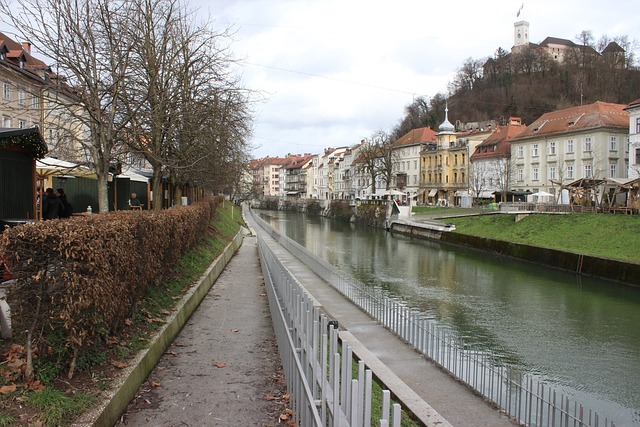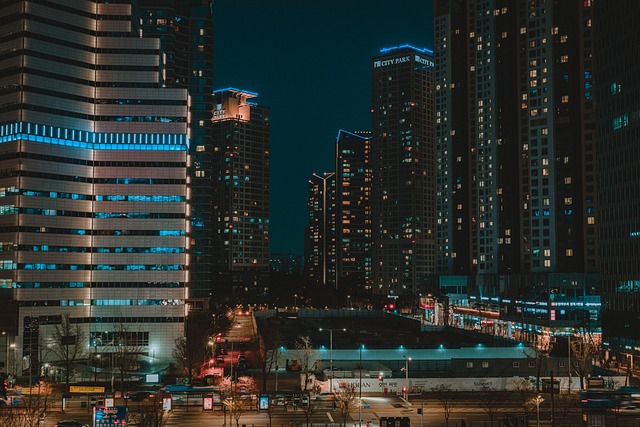Saddar Town, Karachi's bustling center, grapples with complex road networks and navigation challenges due to its dense layout. Despite issues like potholes and inadequate drainage, local efforts aim to improve road conditions through maintenance and community engagement. The future of Saddar Town's infrastructure holds the key to revolutionizing urban mobility in Karachi by investing in wider roads, improved signalization, bike lanes, and smart city technologies, enhancing livability and positioning Karachi as a thriving metropolis.
Saddar Town, Karachi, boasts a vibrant urban landscape, but its road conditions present a complex challenge. This article explores the intricate web of Saddar’s road network, delving into the challenges it faces and the ongoing efforts to enhance mobility. From navigating narrow alleys to addressing congestion, we uncover strategies aimed at transforming these roads into efficient, safe arteries for Karachi’s bustling metropolis. Additionally, we glimpse into the future of infrastructure development in Saddar Town.
- Understanding Saddar Town's Road Network in Karachi
- Challenges and Efforts to Improve Road Conditions
- The Future of Infrastructure Development for Better Mobility
Understanding Saddar Town's Road Network in Karachi

Saddar Town, a vibrant and bustling area in the heart of Karachi, boasts a complex road network that is both a testament to the city’s growth and a challenge for its residents. The roads here are a symphony of thoroughfares, alleys, and labyrinthine streets, each with its own story and traffic flow dynamics. Understanding this intricate system is key to navigating Saddar Town effectively.
Karachi’s Saddar Town is characterized by a dense layout where major arteries connect smaller residential lanes, creating a complex web. This design, while offering a rich tapestry of local connections, can make commuting challenging during peak hours. The main thoroughfares, such as I.I. Chundrigar Road and M.A. Jinnah Road, are vital corridors, bustling with both vehicular and pedestrian traffic. These roads are the backbone of the area’s connectivity, linking various neighborhoods and commercial hubs.
Challenges and Efforts to Improve Road Conditions

The road conditions in Saddar Town, Karachi, present a unique set of challenges that have long been a point of concern for residents and authorities alike. The dense urban landscape, coupled with an ever-growing population, has resulted in significant strain on the existing infrastructure. Potholes, uneven surfaces, and inadequate drainage systems are common issues, causing disruptions to daily commutes and increasing the risk of accidents. These problems are further exacerbated by poor maintenance and a lack of timely upgradation.
However, efforts to improve road conditions in Saddar Town are not unheard of. The local government and various civil society organizations have been actively working towards addressing these concerns. Initiatives include regular maintenance drives, where teams repair and resurface roads, fill potholes, and install better drainage systems. Additionally, community engagement programs encourage residents to report poor road conditions, fostering a collaborative environment for positive change. These ongoing efforts are crucial steps towards enhancing the livability of the area and ensuring safer transportation for all.
The Future of Infrastructure Development for Better Mobility

The future of infrastructure development in Saddar Town, Karachi, holds immense potential to transform mobility and enhance the overall urban experience. With rapid urbanization and increasing traffic congestion, there is a pressing need for strategic planning. The focus should be on creating efficient transportation networks that cater to the growing needs of the city’s residents and businesses. By investing in modern road infrastructure, including widened avenues, improved signalization, and dedicated bike lanes, Karachi can move towards becoming a more accessible and livable metropolis.
Smart city initiatives can play a pivotal role in achieving these goals. Implementing technology-driven solutions like traffic management systems, real-time data analytics for congestion monitoring, and intelligent transportation applications will streamline mobility. These advancements promise to reduce travel times, improve road safety, and contribute to environmental sustainability by encouraging the use of public transport and active modes of commuting. Karachi’s infrastructure development should aim to create a seamless, interconnected network, ensuring efficient connectivity within the city and facilitating regional travel.
Karachi’s road conditions in Saddar Town, as explored throughout this article, highlight a complex web of challenges and opportunities. While navigating the intricate network requires careful consideration, ongoing efforts to improve infrastructure demonstrate a promising future for mobility in the city. By addressing critical issues and adopting innovative solutions, Karachi is taking significant steps towards enhancing connectivity and fostering sustainable urban development.
